
ARTH232  SPRING 2016 SPRING 2016  SCHEDULE SCHEDULE  REQUIREMENTS REQUIREMENTS
Hellenistic Period
c. 323-31 BCE
SCULPTURE
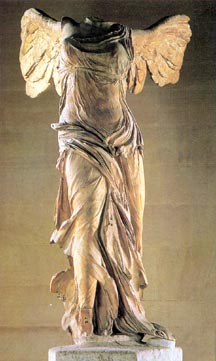
Nike of Samothrace
perhaps by Pythokritos of Rhodes
c. 180 BCE
Height 8 feet 1 inch
(Louvre Museum, Paris)


Sleeping Satyr )Barberini Faun)
found in Rome, possibly a Hellenistic original
c. 200 BCE
Marble, Height 7 feet
(Staatliche Antikensammlungen, Munich)
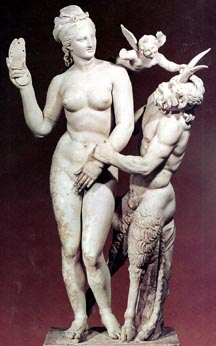
Aphrodite, Pan, and Eros
From the Establishment of the Poseidoniasts of Berytos (Beirut) on Delos
c. 100 BCE
Marble, Height 4 feet 4 inches
(National Museum, Athens)

Nymph and Satyr
Roman copy of an original of c. 100 BCE
Marble, Height 233/5"
(Capitoline Museum, Rome)
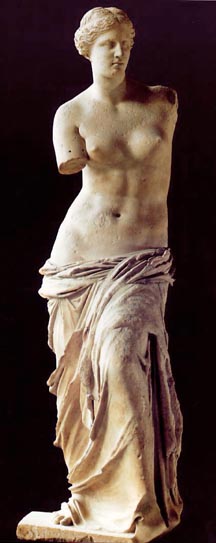
Aphrodite of Milos
Venus de Milo
c. 150-100 BCE
Marble, Height 6' 83/4"
(Louvre Museum, Paris)
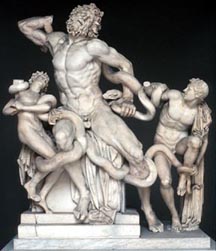
The Laocoön Group
Laocoön and his sons battling the serpents (earlier restoration)
Attributed by Pliny to the Rhodian sculptors Hagesandros, Athenedoros, and Polydoros
2nd centuries BCE or 1st century CE
Marble, height 7' 101/2"
(Vatican Museums, Rome)
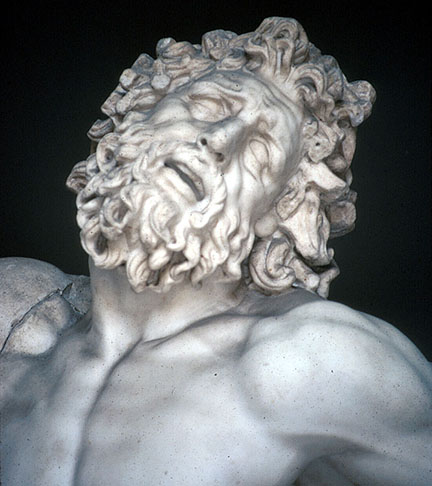
Another aspect of Hellenistic style is the interest in melodramatic pathos, for example in the sculptural group of Laocoön and his Two Sons. It depicts an incident from the end of the Trojan War in which Laocoön and his sons are devoured by a pair of serpents. The choice of such a moment lends itself to the Hellenistic taste for violent movement. The zigzags and strenuous contrapposto of the human figures are bound by the snakes winding around them.
In the Laocoön, Classical restraint and the symmetry of the Parthenon sculptures have been abandoned. There is extra weight on the left as Laocoön's powerful frame pulls away from the serpent biting his right hip. A counter-balancing diagonal is produced by the sharp turn of his head, and is repeated by the leg, torso, and head of the boy on the right. Laocoön and his children express pain through facial contortion and physical struggle bulging muscles, veins, flesh pulled taut against the ribcage.
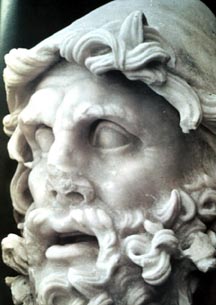
Sperlonga
Roman 1st century CE version of a Hellenistic original, or a Hellenistic original of the 2nd century BCE
Marble
(Archaeological Museum, Sperlonga)
|
© Christopher L. C. E. Witcombe
|

 SPRING 2016
SPRING 2016  SCHEDULE
SCHEDULE  REQUIREMENTS
REQUIREMENTS

 SPRING 2016
SPRING 2016  SCHEDULE
SCHEDULE  REQUIREMENTS
REQUIREMENTS